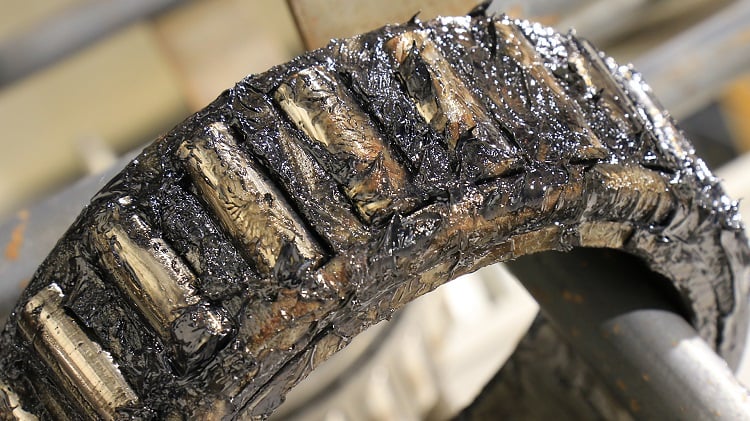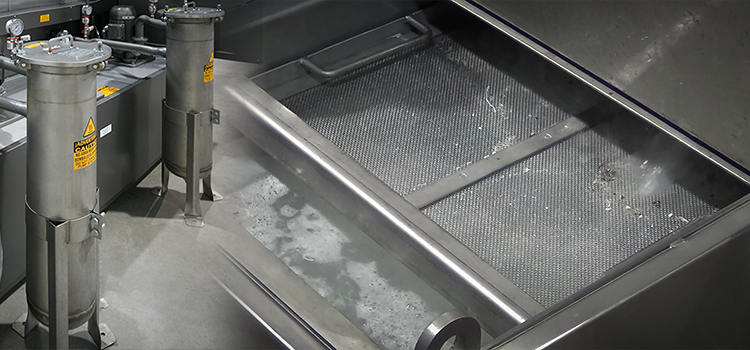WHY AQUEOUS CLEANING
Cleaning is defined as the removal of unwanted soils from the surface of a part. Mechanical components must be cleaned as part of the manufacturing process or during maintenance and overhaul operations.
During the manufacturing of new parts, proper cleaning will ensure the removal of oils and solid contaminants so that the end product will function as intended. Removal of contaminants is critical for automotive and aerospace components as foreign contaminants will lead to the failure of mechanical systems.
Proper cleaning during remanufacturing and overhaul is also critical.Cleaning parts will reveal defects, which may lead to a decision to scrap some of them. Cleaning parts also contributes to worker safety, as much of the contamination will be removed from components before they are dismantled and overhauled.
AQUEOUS CLEANING ADVANTAGES
For the most part, environmentally-friendly aqueous parts cleaning solutions have replaced solvents and offer the same cleaning performance. Aqueous cleaning detergents are specially formulated to target soils and displace them so that they can be easily rinsed away from the part’s surface.
Aqueous cleaners offer a safer working environment as they have a low volatile organic compound (VOC) content and emit fewer odors than solvents. They are also less expensive than solvents since they can be used in lower concentrations and in a recirculating washing system. The disposal cost of these chemicals is also lower as they mainly consist of water.
AQUEOUS CLEANING TECHNIQUES
Various cleaning techniques, such as spray, immersion, and ultrasonic, use aqueous parts cleaning solutions to effectively clean parts. Each of these techniques has its advantages.
Spray cleaning produces mechanical energy to remove dirt from the surface of a part. It is most effective in areas that are directly exposed to the cleaning jets. Spray cleaning equipment may be configured with special nozzle arrangements and probes to clean difficult-to-reach areas.
Immersion cleaning allows the chemical to access areas that cannot be reached by spray cleaning only. However, this technique is much slower because of the reduction in mechanical energy. Agitation of the part or of the solution may be employed to provide the mechanical energy necessary to dislodge soils.
Ultrasonic cleaning is used in specific cleaning applications. Ultrasonic generators are used in an immersion process to generate the high-frequency and high-energy sound waves required to remove stubborn soils on the surface of a part. Ultrasonic is typically used for cleaning more intricate mechanical components.
The part complexity and the type of soil that must be removed will dictate which technique is used.
COMPOSITION OF AQUEOUS CLEANERS
Aqueous cleaners are, for the most part, composed of water. Several other chemical compounds, such as wetting agents, alkaline salts, and sequestering agents, are used to improve the cleaning effectiveness of the solution.
WETTING AGENTS
Water is a universal solvent. Unfortunately, water has one big flaw in that it doesn’t wet surfaces well. This is due to the high surface tension of water compared to oil and grease found on dirty parts. In order to improve the cleaning effectiveness of water, wetting agents are used. These surfactants reduce the surface tension of water, allowing it to penetrate and loosen soils bonded to the part surface. As the soils detach from the part surface, they break down into smaller droplets. The surfactants in the solution will then emulsify the oil droplets in the wash solution, preventing the oil from reattaching to the newly cleaned parts and floating to the surface of the solution. The addition of heat greatly lowers the viscosity of the oil and facilitates the emulsification process.
SEQUESTERING AND CHELATING AGENTS
These agents are used to condition the water by sequestering mineral salts in hard water, which allows tough soils to be easily removed. Without these agents, the active ingredient in the washing chemical would become rapidly depleted as it would interact with the mineral salts instead of the soils removed from parts.
ALKALINE SALTS – BUILDERS
Potassium hydroxide and sodium hydroxide are among the most common caustics used to increase alkalinity in a wash solution. Higher alkalinity helps in the degreasing of components, yet it must be used in conjunction with surfactants as alkaline solutions have poor wetting capability. Surfactants also help hold the soils in suspension.
TYPES OF CLEANING CHEMICALS
Several types of aqueous cleaners may be used in a parts washer. Ultimately, selecting the proper cleaning solution will be based on the part substrate and the type of soil that must be removed.
ACID (PH 1–5)
- Some types of acids: nitric, sulfuric, hydrochloric, phosphoric, etc.
- Moderate acidic levels (pH 4–6) are generally used for surface treatment (phosphating, brightening, etching).
- Higher acidic levels (pH < 1–4) are used in descaling and de-rusting.
NEUTRAL (PH 6–9.5)
- These are typically multipurpose cleaners used to remove metalworking fluids and oils from newly manufactured components.
- These products include amines and wetting agents to remove oils.
- Their low alkalinity makes them generally safe to use on soft metals.
ALKALINE (PH 9.5–11.5)
- These are the most widely used in industrial cleaning applications to remove grease on steel components.
HIGH ALKALI (PH >= 12)
- These are very aggressive chemicals and are primarily used to remove stubborn oils, grease, rust, paint, and carbon-based soils.
- Their ability to saponify oils ensures that the oils will not be redeposited onto the cleaned parts.
PARAMETERS AFFECTING CLEANING PERFORMANCE
There are four main factors that affect the cleaning process: chemistry, temperature, mechanical energy, and time.
CHEMISTRY
Chemicals contain a blend of active ingredients, such as wetting agents, emulsifiers, as well as chelating and sequestering agents. By adjusting the concentration of the chemical, these active ingredients provide an aqueous cleaner that effectively removes soils.
TEMPERATURE
Higher temperatures improve the ability of the cleaning chemical to melt away grease and oil.
MECHANICAL ENERGY
An aqueous parts washer uses mechanical energy in the form of pressure and flow. A pump is used as a tool to blast loosened soil off the part surface. As the top soil layer is removed, a new layer is exposed and removed, and the process is repeated until the substrate material is reached.
TIME
In general, prolonged exposure to the cleaning action improves the ability of the wash chemical to dissolve soils and wash them away. However, the part substrate may be affected by the chemical, which is the case for soft metals such as copper alloys and aluminum.
IMPORTANCE OF RINSING
Rinsing is as important as cleaning. Typically, rinsing of a part is done in the same matter as the washing, either through spraying or immersion.
The cleaning action is primarily responsible for the removal of soils, yet rinsing completes the cleaning process by removing loose soils and chemical residue from the surface of the cleaned part. The type and concentration of the wash chemical determines the volume of water that is required for proper rinsing. If the chemical residue is not removed, it will leave chemical streaks on the part’s surface.
Multiple rinses may be required to remove heavy chemical residue. To reduce overall water consumption, a counterflow system may be used. Typically, a first rinse is used to make up or replenish the solution of the wash tank. The final rinse is used to make up the solution of the first rinse. The final rinse is typically made up of fresh water, therefore ensuring that the part remains clean. The quality of the rinse water is also important. Hard water will leave mineral deposits as the parts dry. In some cases, the use of reverse osmosis water or deionized water may be necessary to provide a spot-free finish.
For steel components, adding corrosion inhibitors to rinse water will prevent corrosion by leaving a thin protective film on the part during rinsing.



